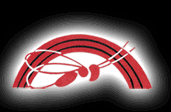 |
 |
FREE REPORTS! Our 57-Point bug Audit Reveals How To Boot Out The
Remaining Pests-At No Risk To Your Pocketbook Facts About "BIG NAME" National Pest
Control Companies And Other Companies
That Their Advertising Never Tells You At Last, Never Pay For Termite Treatments Again 4 Common Homeowner Mistakes To Avoid How To Protect Your Home Against Termites How To Avoid Being Ripped Off By a Termite & Pest Control Company
|
All About Stinging Insects Cicada Killers: These large solitary wasps, about 1 1/2 inches long, hunt cicadas and put them in burrows as food for the young. Rarely sting people, but their burrows damage lawns. Umbrella or Paper Wasps: These slender, reddish or brown social wasps build small nests shaped like an inverted umbrella, often under eaves. Can be dangerous when they nest near doors and windows. Hornets: Larger and less distinctly striped than yellow jackets. European hornets nest in hollow trees and attics. Bald-faced hornets build exposed nests which hang in trees like large grayish footballs. Both these social wasps are very aggressive. Yellow Jackets: These black and yellow striped social wasps are small (workers about 1/2 inch long), but their large nests may contain over 5,000 individuals. Nests are concealed underground, or in hollow trees, wall voids and attics. They often scavenge around food facilities and trash containers and sting repeatedly with little provocation. Bumble Bees: Resemble carpenter bees but top of abdomen is hairy, not shiny. Social insects, forming small colonies, mostly underground. Can be pests when nesting near sidewalks or where children play. Honey Bees: Yellowish to blackish, with workers about 2/3 inch long. They are the most common social bees, vital for pollinating wildflowers and crops and for producing honey. They are unique in forming perennial colonies, using stored honey as food in adverse weather. Can become pests by nesting in wall voids. They are not very aggressive, and their barbed stinger stays in the wound, so they only sting once. Carpenter Bees: Solitary bees, usually darker and larger than honey bees. Each female chews a tunnel in wood in which she lays a row of eggs, sealing each egg in a cell with food derived from pollen and nectar. Nest tunnels are about 5 inches long, with an entrance about 1/2 inch wide. Tunneling by many bees over several years can cause major damage to siding, window sill, eaves, outdoor furniture and fences.
Bees and wasps should only be controlled when they are damaging property or endangering people. Too often, bees and wasps are killed when they pose no threat and may be beneficial. For instance, the large, dark, hairy wasps seen hovering over lawns may be digger wasps, which generally don't attack people but are very useful in getting rid of beetle grubs which attack grass. Even when bees and wasps are really pests, homeowners should be wary about tackling them because of the risk of people being stung. Some over-the-counter pesticides make bees and wasps more aggressive and may cause them to surge out of their nests, stinging not only the pesticide applicator but anyone else nearby. Some pesticides may also make treated nests repellent so that bees and wasps mill around disoriented, perhaps entering nearby buildings and causing a greater nuisance. Nonchemical measures, such as knocking down nests of umbrella wasps from the eaves, may also be ineffective - the wasps may quickly rebuild their nests. However, here are 10 measures you can take to reduce problems from bees and wasps.
Did You Know?
Hill's Termite & Pest Control · 27-B West Jackson Street · Cookeville, TN |